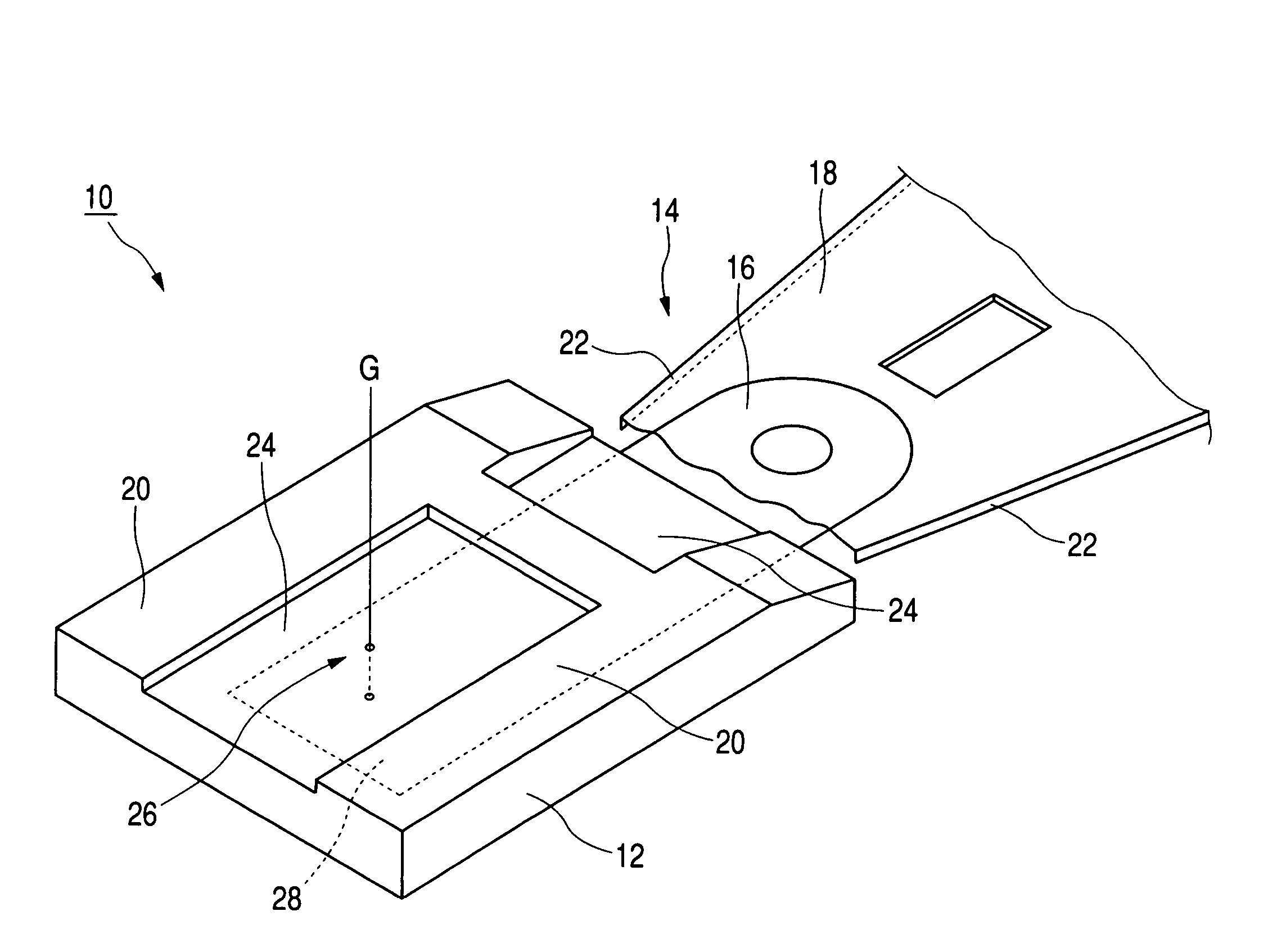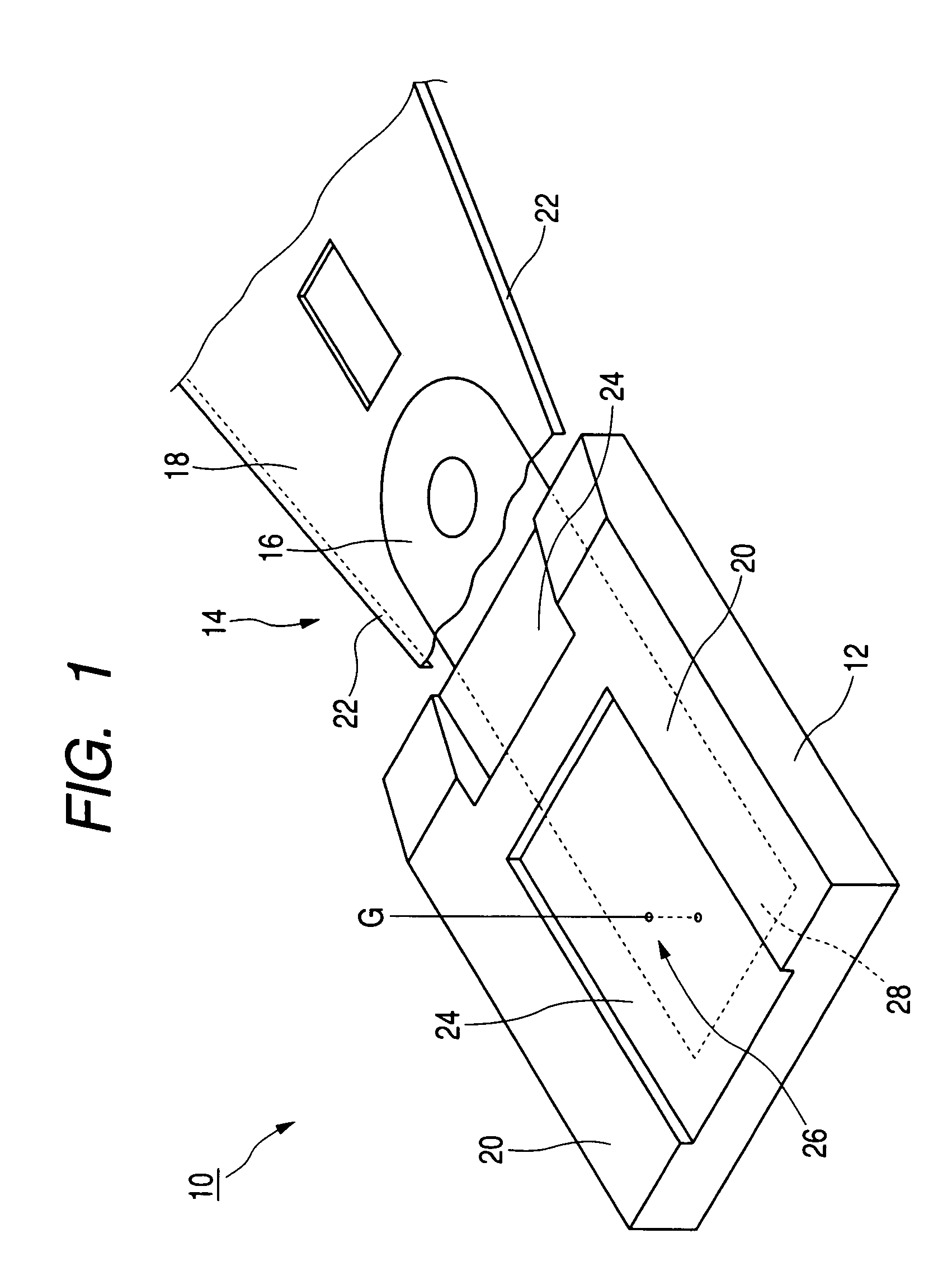Method of manufacturing a magnetic head and magnetic head manufacturing apparatus
a manufacturing method and technology of a manufacturing apparatus, applied in the manufacture of head surfaces, mechanical control devices, instruments, etc., can solve the problems of defects in the slider are discovered after hsa, and the manufacturing method of the conventional magnetic head is described above. , to achieve the effect of preventing esd and the like damage to elements within the slider, increasing the precision of the standard, and reliably detecting
- Summary
- Abstract
- Description
- Claims
- Application Information
AI Technical Summary
Benefits of technology
Problems solved by technology
Method used
Image
Examples
Embodiment Construction
[0029]Preferred specific embodiments of a method of manufacturing a magnetic head, and a magnetic head manufacturing apparatus, according to the present invention are explained in detail below with reference to the appended drawings.
[0030]FIG. 1 is a perspective view of a magnetic head manufactured by using a method of manufacturing a magnetic head according to an embodiment of the present invention. Referring to FIG. 1, a magnetic head 10 that is manufactured by using the method of manufacturing a magnetic head according to this embodiment includes a slider 12 in which a giant magneto-resistive (GMR) element is incorporated, and a suspension 14 that is fixed to the slider 12. The suspension 14 includes a flexure 16 that is bonded and fixed to the slider 12, a load beam 18 that is connected to the flexure 16 by spot welding, and a flexible printed circuit (FPC, not shown) that provides wirings for the GMR element that is formed on the slider 12.
[0031]An ABS 20 is formed on a side of...
PUM
| Property | Measurement | Unit |
|---|---|---|
| shape | aaaaa | aaaaa |
| surface area | aaaaa | aaaaa |
| defects | aaaaa | aaaaa |
Abstract
Description
Claims
Application Information
 Login to View More
Login to View More - R&D
- Intellectual Property
- Life Sciences
- Materials
- Tech Scout
- Unparalleled Data Quality
- Higher Quality Content
- 60% Fewer Hallucinations
Browse by: Latest US Patents, China's latest patents, Technical Efficacy Thesaurus, Application Domain, Technology Topic, Popular Technical Reports.
© 2025 PatSnap. All rights reserved.Legal|Privacy policy|Modern Slavery Act Transparency Statement|Sitemap|About US| Contact US: help@patsnap.com



